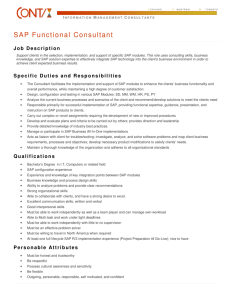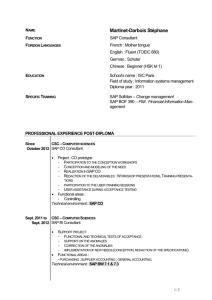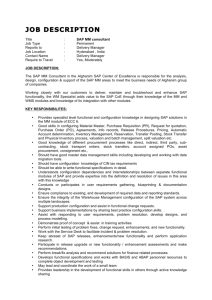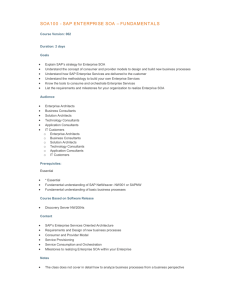IT Business Plan Outline & Background Infromation
advertisement
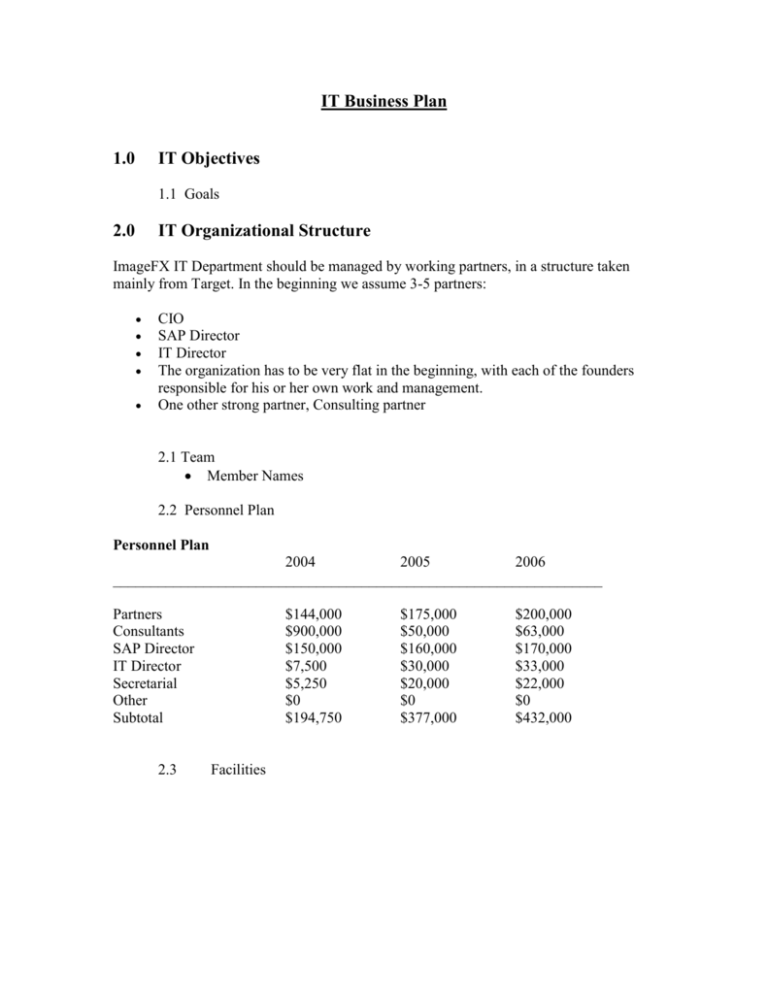
IT Business Plan 1.0 IT Objectives 1.1 Goals 2.0 IT Organizational Structure ImageFX IT Department should be managed by working partners, in a structure taken mainly from Target. In the beginning we assume 3-5 partners: CIO SAP Director IT Director The organization has to be very flat in the beginning, with each of the founders responsible for his or her own work and management. One other strong partner, Consulting partner 2.1 Team Member Names 2.2 Personnel Plan Personnel Plan 2004 2005 2006 _________________________________________________________________ Partners Consultants SAP Director IT Director Secretarial Other Subtotal 2.3 $144,000 $900,000 $150,000 $7,500 $5,250 $0 $194,750 Facilities $175,000 $50,000 $160,000 $30,000 $20,000 $0 $377,000 $200,000 $63,000 $170,000 $33,000 $22,000 $0 $432,000 3.0 IT Strategy and Implementation Plan 3.1 Implementation Plan Section 1 – Answer the following fundamental questions: 1. Why are we implementing SAP? 2. How will it benefit ImageFX? 3. What modules will be implemented? Provide an explanation for each module. Section 2 – Resources - Refer to SAP Implementation Guide pp 14-16 1. What resources will be used, i.e. which specific employees or consultants? 2. If consultants will be used, what background will they have? 3. Will you structure teams for the implementation, i.e. Basis team, ALE team, Config? 4. What Process teams will be needed, i.e. Finance, HR, etc. Section 3 – Timeline 1. Identify Project Phases – i.e. Phase I may be the implementation of main SAP modules – Phase II may be implementation of “fringe” modules. Or you could implement a plant by plant rollout. 3.2 Training Plan 1. Who will be trained? 2. What will they be trained in? What courses – Be specific? 3. When will they be trained – This should coincide with implementation timeline for delivery of SAP modules. 4. Who will train them? In-house or consultant? 5. Where will the training take place? Onsite or Offsite 6. Will internal courseware be developed? 4.0 IT Financial Plan 4.1 Budget 5.0 Target Conversion Strategy 5.1 Conversion Plan Section 1 – Target Systems Assessment 1. 2. 3. 4. Define Target current system structure Which systems can be supported by SAP? Which systems most likely cost Target the most to maintain? Which systems are important to Target and why? Section 2 – Conversion Strategy 1. Which Target systems will you convert and why? 2. Define a timeline for conversion of the systems, i.e. SD will be converted over a period of one year, simultaneously with HR, in the Midwest region. Target is currently using the following systems: Functional Area Current Systems System Functionality Human Resources PeopleSoft Maintain Employee Data Manage Hiring, Firing, and Leaves Absence Benefits Administration Payroll Finance Oracle Financials Accounts Payable Account Receivable General Ledger Marketing Access, Excel, SAS Track Department Expenses In addition, Target uses proprietary systems for the following: Training Budgeting Sales & Distribution (tracking sales & inventory) Purchasing Credit Card System (tracks customer shopping habits) Finally, Target out sources their Internet sales system. Supporting information and General Conversion Strategy: Proprietary systems typically cost more money to maintain than off the shelf products It may mot be necessary to convert all at once, or at all, to SAP in all departments of Target, depending on cost and usage. Departmental systems typically cost the business more money than ERP systems, as data is duplicated across the infrastructure. All Target personnel needs to buy into SAP; kickoff and departmental meetings need to take place to educate staff. SAP training needs to be provided for Sales and Distribution for all of Target, as well as any other modules that ImageFX decides to convert. Target’s SAP should be implemented in phases – consideration should be taken regarding system usage and store location, i.e. Sales and Distribution module would not be implemented in every store all at once, whereas a smaller department such as Human Resources may be able to cut over all at once.




